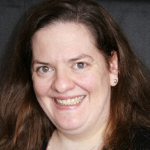In the last decade, federal and state curricular intervention has left teachers with a stricter time frame and limited academic freedom for its implementation. One primary example is Common Core in K-12 English and math. However, earlier trends around 2008 included adding new verbs to assist in understanding, in part, the cognitive domain in Bloom’s (1956) Taxonomy of Educational Objectives and instructional design and learning transfer in Wiggins and McTighe’s (1998) Backward Design. The latter work, however, was coined primarily by Ralph Tyler in 1949. Despite these popular K-12 curricular trends, all phases are temporal. Here are two ideas for teachers to keep current the ever-changing curricular themes:
The curricula should align to the class’ goals.
Teaching any content area requires structured goals. When I taught secondary German, grammar needed to be taught as independent units. This was not the case in secondary English, as grammar was incorporated within the curricular topics. In the German classroom, I had a set number of grammatical themes that needed be accomplished before the end of the year in order to meet local, state, and International Baccalaureate requirements. For example, students needed to know the six modal (helping) verbs (can, should, may, etc.) and their conjugated forms. Beginners worked in the present and ended with the simple “written” past. Advanced students worked with more complex forms like future, “spoken” past tense, and subjunctive. Weekly goals and checking for understanding were needed to reference the broader classroom goals.
The focus of mid-20th century educational theorists was aimed at students’ future needs and the importance of the district’s intervention if there were a gap between curricular content and the student’s application of it. One example is Tyler (1949), who reflected on these vast goals in his publication Basic Principles of Curriculum and Instruction. This necessary intervention seems lost in today’s school districts due to trending pedagogies and a lack of much-needed time that ensures that trends have a chance to become long-term.
The depth of the curricular topic depends on the composite of students.
Delving into a particular depth of a curricular topic is contingent upon multiple intelligences in the classroom. Unfortunately, due to time limits in Common Core, content must be delivered at a faster pace in an overview fashion than in previous years. Regardless if the students have mastered the skills needed to progress, the content moves forward. Following the 7-12 language classroom paradigm, I would only introduce the conjugation pattern between the present tense first, second and third persons in singular and plural. Not going into depth with these forms in past tense was based on skill-level appropriateness and testing requirements. However, if a student showed a higher skill level, then supplemental information would be provided.
In the past ten years, mandated state curricula revolve around time constraints and a survey of content when it should be focusing on students’ alignment to real-world experiences and future career applications. The traditional K-12 classrooms reflect research-based trends. However, teachers who apply instructional consistency can remedy the frequently-changing patterns of federal and state curriculum writers, many of whom are misaligned to the ever-changing dynamics at the local level. If local school districts had more influence over their curriculum-writing, it would solve the disconnect from state writers who focus primarily on blanketing their writing for every rural, suburban, and urban school in their jurisdiction.
Are you a Sigma Tau Delta Alumni member? Consider submitting a blog to WORDY by Nature to share with your fellow Sigma Tau Delta members how you have been using your English degree.
 Gabrielle L. McBath, PhD
Gabrielle L. McBath, PhD
Independent Author & Manuscript Reviewer, Journal of International Education Studies
Connect with Gabrielle on LinkedIn
Sigma Tau Delta
Sigma Tau Delta, International English Honor Society, was founded in 1924 at Dakota Wesleyan University. The Society strives to
- Confer distinction for high achievement in English language and literature in undergraduate, graduate, and professional studies;
- Provide, through its local chapters, cultural stimulation on college campuses and promote interest in literature and the English language in surrounding communities;
- Foster all aspects of the discipline of English, including literature, language, and writing;
- Promote exemplary character and good fellowship among its members;
- Exhibit high standards of academic excellence; and
- Serve society by fostering literacy.
With over 900 active chapters located in the United States and abroad, there are more than 1,000 Faculty Advisors, and approximately 9,000 members inducted annually.
Sigma Tau Delta also recognizes the accomplishments of professional writers who have contributed to the fields of language and literature.






Add Comment